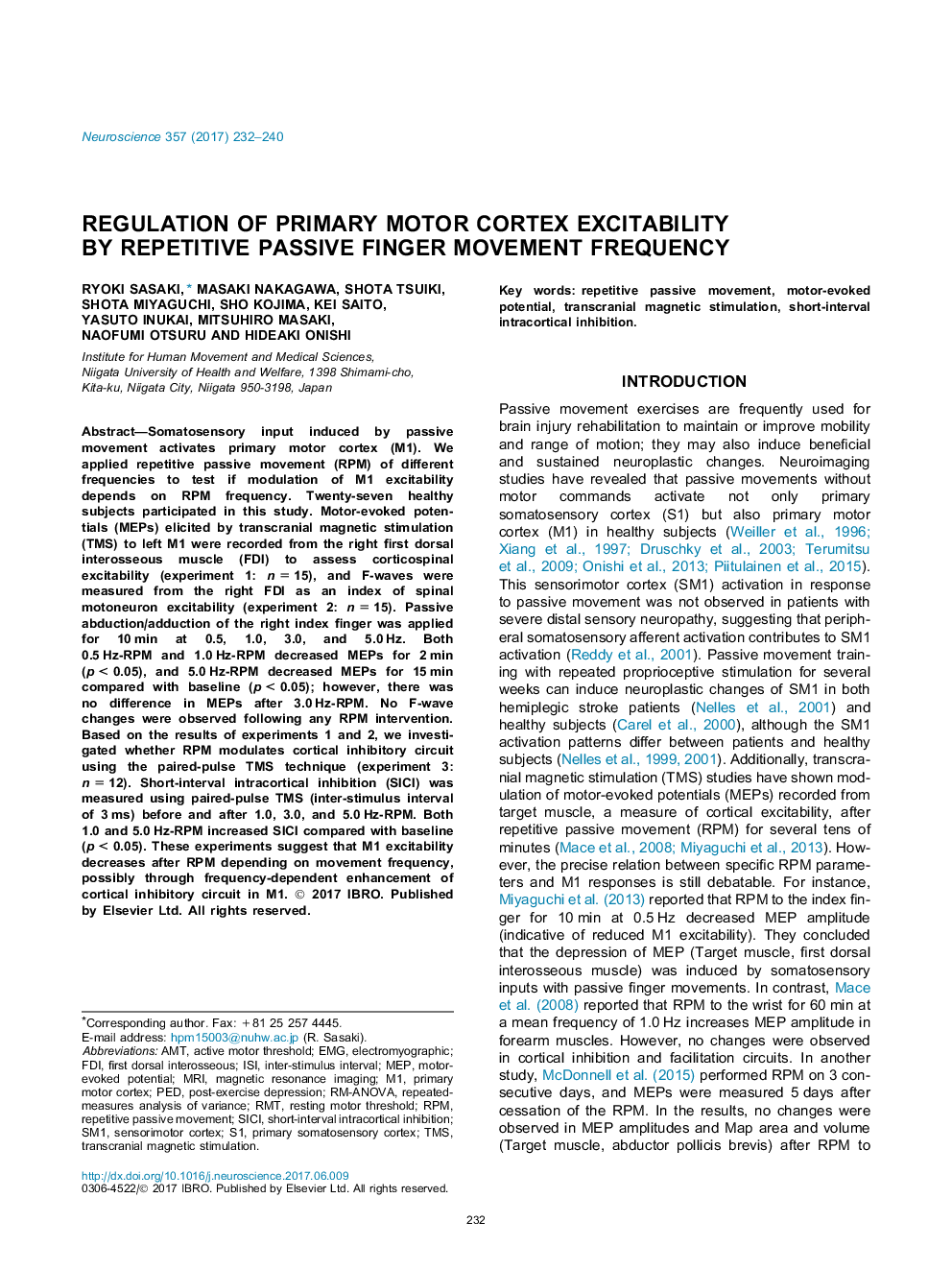| کد مقاله | کد نشریه | سال انتشار | مقاله انگلیسی | نسخه تمام متن |
|---|---|---|---|---|
| 5737815 | 1614719 | 2017 | 9 صفحه PDF | دانلود رایگان |
- M1 excitability decreased after repetitive passive finger movement (RPM) depending on movement frequency.
- Spinal motoneuron excitability does not change after RPM.
- Cortical depression following RPM is mediated by the activation of intracortical GABAergic circuits in M1.
- 5.0Â Hz-RPM induced prolonged M1 depression.
Somatosensory input induced by passive movement activates primary motor cortex (M1). We applied repetitive passive movement (RPM) of different frequencies to test if modulation of M1 excitability depends on RPM frequency. Twenty-seven healthy subjects participated in this study. Motor-evoked potentials (MEPs) elicited by transcranial magnetic stimulation (TMS) to left M1 were recorded from the right first dorsal interosseous muscle (FDI) to assess corticospinal excitability (experiment 1: n = 15), and F-waves were measured from the right FDI as an index of spinal motoneuron excitability (experiment 2: n = 15). Passive abduction/adduction of the right index finger was applied for 10 min at 0.5, 1.0, 3.0, and 5.0 Hz. Both 0.5 Hz-RPM and 1.0 Hz-RPM decreased MEPs for 2 min (p < 0.05), and 5.0 Hz-RPM decreased MEPs for 15 min compared with baseline (p < 0.05); however, there was no difference in MEPs after 3.0 Hz-RPM. No F-wave changes were observed following any RPM intervention. Based on the results of experiments 1 and 2, we investigated whether RPM modulates cortical inhibitory circuit using the paired-pulse TMS technique (experiment 3: n = 12). Short-interval intracortical inhibition (SICI) was measured using paired-pulse TMS (inter-stimulus interval of 3 ms) before and after 1.0, 3.0, and 5.0 Hz-RPM. Both 1.0 and 5.0 Hz-RPM increased SICI compared with baseline (p < 0.05). These experiments suggest that M1 excitability decreases after RPM depending on movement frequency, possibly through frequency-dependent enhancement of cortical inhibitory circuit in M1.
Journal: Neuroscience - Volume 357, 15 August 2017, Pages 232-240
